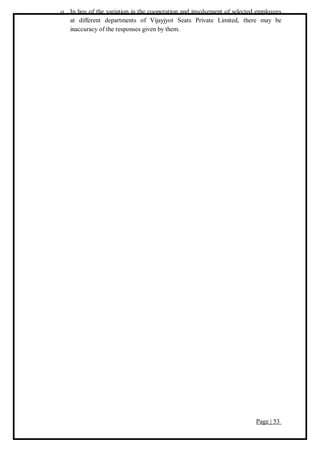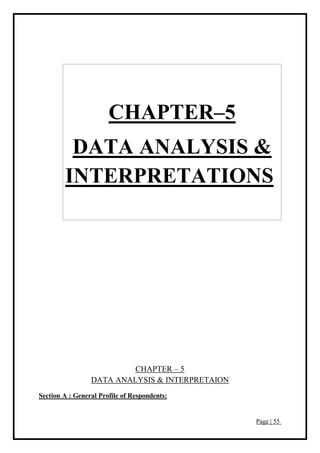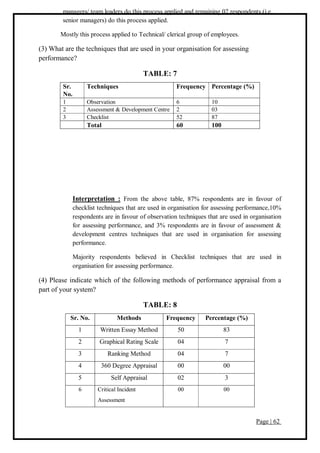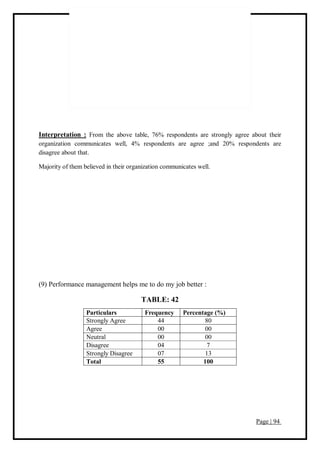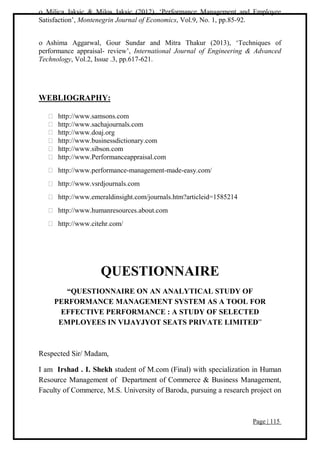The document provides an introduction to performance management, including its history, definitions, aims, principles, benefits and the performance management system process. It discusses factors that affect performance and characteristics of an ideal performance management system. The document also covers performance review techniques and tips for successful performance reviews.
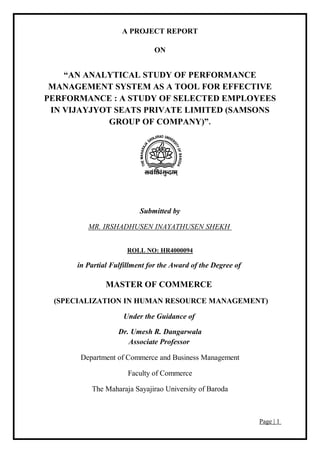
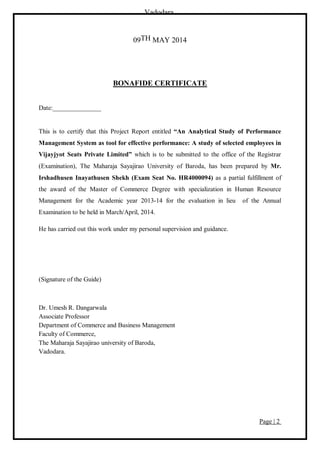














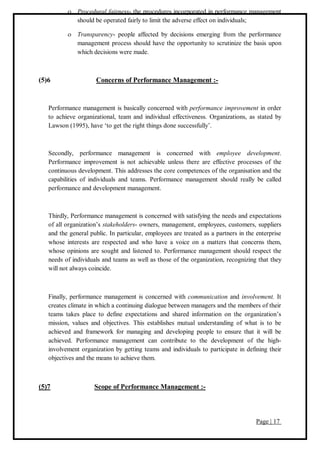

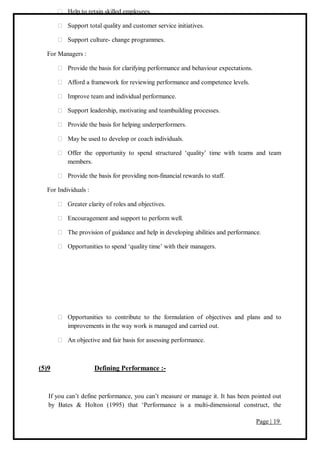






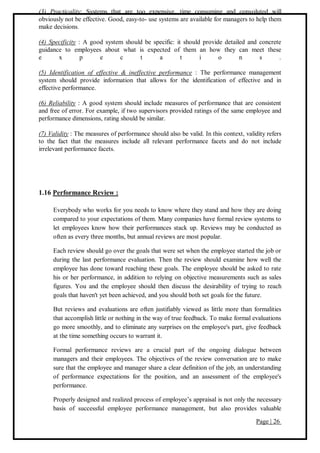






![Page | 33
About Royal Knitting :-
Initially Royal Knitting Pvt. Ltd [RKPL] established in 1983, produced knitted fabrics to meet
the in-house requirements for leather cloth backing, for our sister concern - National Leather
cloth Mfg. Co. and Vinyroyal Plasticoates Pvt. Ltd. Today RKPL’s installed capacity stands at
175 tones/month of circular knitted fabrics and 20 tones/month of warp knitted fabrics.
Only 30% of the capacity is utilized to make supplies to group company, 50% supplies are
made to other local Artificial Leathercloth manufacturers & exports and remaining 20%
supplies go to OE customers such as Melba, Faze 3, Reliance, Shamkeen. In OE the fabric is
applied for back scrim application in automotive upholstery.
Production facility consists of 28 circular knitting machines (Single Jersey, Terry, Interlock) of
Mayer & Cie make, 4 Orizio make, 2 Taifan make and 1 Fukuhara.
Warp Knitting machines of Karl Mayer; of which 2 are KS-3 and 1 HKS-3M.
Raising machine of Daintipaolo. Future plans include setting up of in-house dyeing & finishing
line.
VIJAYJYOT COMPANY OVERVIEW
Vijayjoyt is leading manufacturer and marketer of automotive, cinema / auditorium, bus &
railways seating systems of India. Its products are marketed under the brand name
VIJAYJYOT. They are 2 decades old company in seating system having clienteles at home
(India) and abroad.
Design & Development Facility :-
Its design & development facility is located in plant in Baska, near Baroda, Gujarat and plant
in Pune, Maharastra. They have state of art of technology development centre where 20
dedicated engineers/ staff are involved in development of new products and applications round
the clock for various segments of seating systems. They are an ISO/ TS 16949:2000 certified
company.
Its People :-
Their main focus is future growth of company lies with its human resource people. The
human skills are updated with training inputs on a regular basis and also have a
HR practices in our organisation. Our top management is involved in HR policy within the
organization, that a clear indication that we are people performance organization.
Marketing & Distribution :-](https://image.slidesharecdn.com/projectreportsem-140713022127-phpapp01/85/Project-Report-on-Performance-Management-System-33-320.jpg)



















